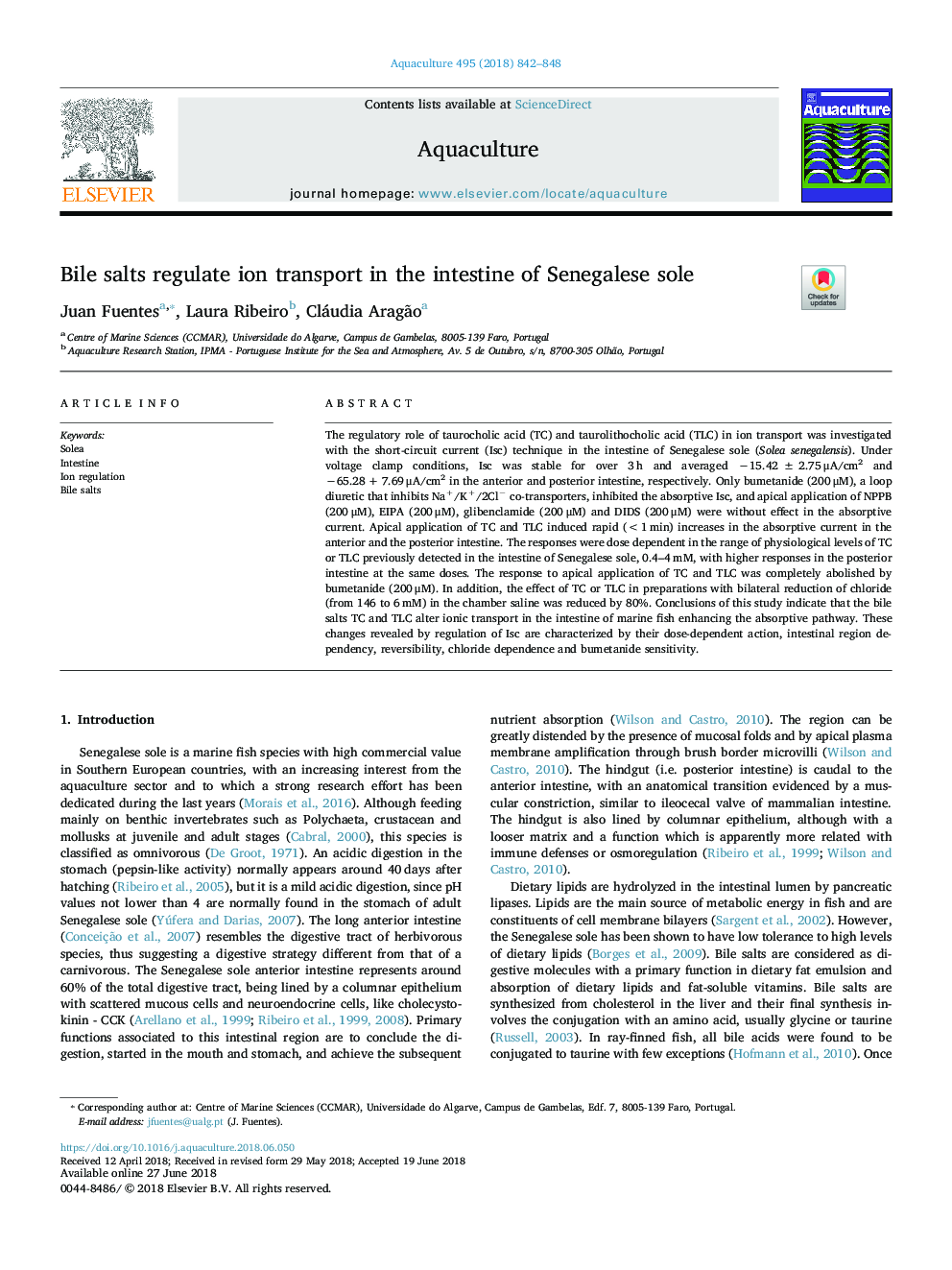| Article ID | Journal | Published Year | Pages | File Type |
|---|---|---|---|---|
| 8493080 | Aquaculture | 2018 | 7 Pages |
Abstract
The regulatory role of taurocholic acid (TC) and taurolithocholic acid (TLC) in ion transport was investigated with the short-circuit current (Isc) technique in the intestine of Senegalese sole (Solea senegalensis). Under voltage clamp conditions, Isc was stable for over 3â¯h and averaged â15.42â¯Â±â¯2.75â¯Î¼A/cm2 and â65.28â¯+â¯7.69â¯Î¼A/cm2 in the anterior and posterior intestine, respectively. Only bumetanide (200â¯Î¼M), a loop diuretic that inhibits Na+/K+/2Clâ co-transporters, inhibited the absorptive Isc, and apical application of NPPB (200â¯Î¼M), EIPA (200â¯Î¼M), glibenclamide (200â¯Î¼M) and DIDS (200â¯Î¼M) were without effect in the absorptive current. Apical application of TC and TLC induced rapid (<1â¯min) increases in the absorptive current in the anterior and the posterior intestine. The responses were dose dependent in the range of physiological levels of TC or TLC previously detected in the intestine of Senegalese sole, 0.4-4â¯mM, with higher responses in the posterior intestine at the same doses. The response to apical application of TC and TLC was completely abolished by bumetanide (200â¯Î¼M). In addition, the effect of TC or TLC in preparations with bilateral reduction of chloride (from 146 to 6â¯mM) in the chamber saline was reduced by 80%. Conclusions of this study indicate that the bile salts TC and TLC alter ionic transport in the intestine of marine fish enhancing the absorptive pathway. These changes revealed by regulation of Isc are characterized by their dose-dependent action, intestinal region dependency, reversibility, chloride dependence and bumetanide sensitivity.
Related Topics
Life Sciences
Agricultural and Biological Sciences
Aquatic Science
Authors
Juan Fuentes, Laura Ribeiro, Cláudia Aragão,
